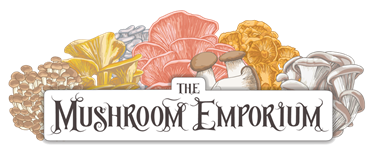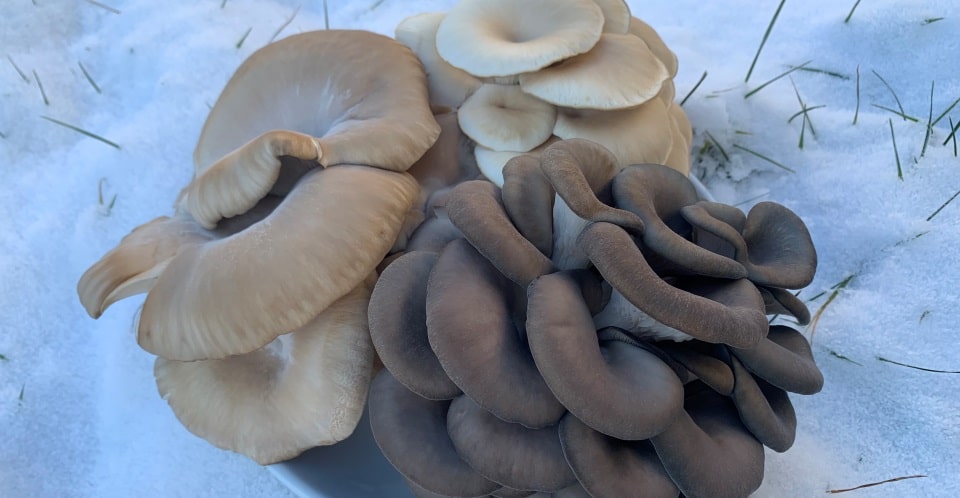A Quick Guide to Growing Mushrooms on Substrate
Growing gourmet mushrooms at home can be a rewarding and fascinating experience. Whilst the Mushroom Emporium does most of the work for you, delivering a mushroom grow kit ready to fruit, we thought we’d give you a little peek behind the curtain at the process of producing the funghi farm box. So, here’s a quick guide on how to grow your own mushrooms using the popular method of cultivating edible mushrooms on substrate:
Choose the mushroom species: There are various types of mushrooms that can be grown at home, such as oyster mushrooms, shiitake mushrooms, or white button mushrooms. Select a species that suits your preferences and growing conditions. The N&G Oyster mushroom is a good mushroom to grow for beginners, as it is hardy and can grow in most temperatures.
Gather supplies: To start growing mushrooms, you’ll need the following supplies:
- Mushroom spawn: This is essentially the “seed” of the mushrooms. It can be purchased from specialized suppliers.
- Substrate: The growing medium for the mushrooms. Common substrates include straw, sawdust, or a mix of the two.
- Containers: Plastic bags or containers will be needed to hold the substrate and spawn.
- Water spray bottle: For maintaining humidity levels. A simple plastic spray bottle will suffice.
- Perforation tool: A clean nail or a small drill can be used to create holes in the containers for air exchange.
Prepare the substrate: If you’re using straw, soak it in water for several hours and then drain. If using sawdust, sterilize it by placing it in a large pot of boiling water for about an hour. Afterward, drain and cool the substrate before proceeding.
Inoculate the substrate: Fill your chosen containers with the prepared substrate. Layer the mushroom spawn evenly throughout the container. Repeat this process until the container is filled, leaving some space at the top for the mushrooms to grow. Firmly pack the substrate to ensure good contact with the spawn.
Incubation: Place the containers in a dark and warm environment, ideally around 70-75°F (21-24°C). This allows the mycelium (the thread-like structure of the mushroom) to grow. Keep the humidity high by misting the containers with water regularly. Within a few weeks, the mycelium should colonize the substrate, appearing as white, web-like growth.
Provide air exchange: Once the mycelium has fully colonized the substrate, it’s time to introduce fresh air. Use a perforation tool to create small holes in the containers, allowing for proper gas exchange. Mist the containers to maintain humidity, but avoid excessive moisture to prevent contamination.
Initiate fruiting: Move the containers to a cooler location with indirect light (around 60-65°F or 15-18°C). You can place them in a basement, a cupboard, or use a grow tent. Mist the mushrooms and the surrounding environment regularly to maintain humidity. After a few weeks, small pinheads should start forming.
Harvesting: As the pinheads grow, they will develop into mature mushrooms. Harvest them by gently twisting and pulling them from the substrate. Harvest them when the caps are fully developed but still closed. Allow some mushrooms to mature and drop spores if you wish to save them for future cultivation.
Second flush: After the initial harvest, continue misting the substrate and maintain proper humidity and temperature conditions. In some cases, mushrooms will produce a second, third or even fourth flush of growth.
Remember, this is a general overview, and different mushroom species may have specific requirements and techniques. It’s crucial to do thorough research on the specific mushrooms you plan to grow to ensure the best results.
You can always contact us for advice or if you have any growing questions.


I really like your writing style..Its so easily understandable. you’ve made mushrooms growing at home very accessible.